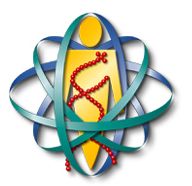Monte Carlo Simulation of Base and Nucleotide
Excision Repair of Clustered DNA Damage Sites. II. Comparisons of Model
Predictions to Measured Data
V. A. Semenenko and R. D. Stewart
Purdue University School of Health Sciences
West Lafayette, IN 47907-2051
Radiat. Res. 164, 194-201 (2005).
Clustered damage sites other than double-strand breaks (DSBs) have a potential to contribute to deleterious effects of ionizing radiation, such as cell killing and mutagenesis. In the companion article (Semenenko et al. Radiat. Res. 164, 180-193, 2005), a general Monte Carlo framework to simulate key steps in the base and nucleotide excision repair of DNA damage other than DSBs is proposed. In this article, model predictions are compared to measured data for selected low- and high-LET radiations. The Monte Carlo model reproduces experimental observations for the formation of enzymatic DSBs in Escherichia coli and two Chinese hamster cell lines (V79 and xrs5). Comparisons of model predictions with experimental values for low-LET radiation suggest that an inhibition of DNA backbone incision at the sites of base damage by opposing strand breaks is active over longer distances between the damaged base and the strand break in hamster cells (8 base pairs) compared to E. coli (3 base pairs). Model estimates for the induction of point mutations in the human hypoxanthine guanine phosphoribosyl transferase (HPRT) gene by ionizing radiation are of the same order of magnitude as the measured mutation frequencies. Trends in the mutation frequency for low- and high-LET radiation are correctly predicted by the model. The agreement between selected experimental datasets and simulation results provides some confidence in postulated mechanisms for excision repair of DNA damage other than DSBs and suggests that the proposed Monte Carlo scheme is useful for predicting repair outcomes.
Acknowledgement
Research supported by the Low Dose Radiation Research Program, Biological and Environmental Research (BER), U.S. Department of Energy, Grant Nos. DE-FG02-03ER63541, DE-FG02-03ER63665.

U.S. Department of Energy, Low Dose Radiation Research Program. Science in Support of Radiation Risk Policy.